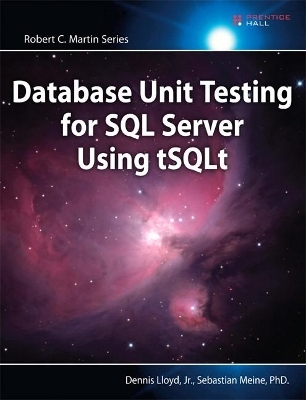
Learning SQL on SQL Server 2005
Seiten
2006
O'Reilly Media (Verlag)
978-0-596-10215-9 (ISBN)
O'Reilly Media (Verlag)
978-0-596-10215-9 (ISBN)
- Titel ist leider vergriffen;
keine Neuauflage - Artikel merken
If you're new to databases, or need a SQL refresher, this guide provides a step-by-step introduction to this database query tool. It lets you apply the theory as you learn SQL. Based on a popular university-level course designed by authors, it starts with very simple SQL concepts, and slowly builds into more complex query development.
Anyone who interacts with today's modern databases needs to know SQL (Structured Query Language), the standard language for generating, manipulating, and retrieving database information. In recent years, the dramatic rise in the popularity of relational databases and multi-user databases has fueled a healthy demand for application developers and others who can write SQL code efficiently and correctly. If you're new to databases, or need a SQL refresher, "Learning SQL on SQL Server 2005" is an ideal step-by-step introduction to this database query tool, with everything you need for programming SQL using Microsoft's SQL Server 2005 - one of the most powerful and popular database engines used today. Plenty of books explain database theory. This guide lets you apply the theory as you learn SQL. You don't need prior database knowledge, or even prior computer knowledge. Based on a popular university-level course designed by authors, Sikha Saha Bagui and Richard Walsh Earp, "Learning SQL on SQL Server 2005" starts with very simple SQL concepts, and slowly builds into more complex query development.
Every topic, concept, and idea comes with examples of code and output, along with exercises to help you gain proficiency in SQL and SQL Server 2005. With this book, you'll learn: beginning SQL commands, such as how and where to type an SQL query, and how to create, populate, alter and delete tables; how to customize SQL Server 2005's settings and about SQL Server 2005's functions; about joins, a common database mechanism for combining tables; Query development, the use of views and other derived structures, and simple set operations; and subqueries, aggregate functions and correlated subqueries, as well as indexes and constraints that can be added to tables in SQL Server 2005. Whether you're an undergraduate computer science or MIS student, a self-learner who has access to the new Microsoft database, or work for your company's IT department, "Learning SQL on SQL Server 2005" will get you up to speed on SQL in no time.
Anyone who interacts with today's modern databases needs to know SQL (Structured Query Language), the standard language for generating, manipulating, and retrieving database information. In recent years, the dramatic rise in the popularity of relational databases and multi-user databases has fueled a healthy demand for application developers and others who can write SQL code efficiently and correctly. If you're new to databases, or need a SQL refresher, "Learning SQL on SQL Server 2005" is an ideal step-by-step introduction to this database query tool, with everything you need for programming SQL using Microsoft's SQL Server 2005 - one of the most powerful and popular database engines used today. Plenty of books explain database theory. This guide lets you apply the theory as you learn SQL. You don't need prior database knowledge, or even prior computer knowledge. Based on a popular university-level course designed by authors, Sikha Saha Bagui and Richard Walsh Earp, "Learning SQL on SQL Server 2005" starts with very simple SQL concepts, and slowly builds into more complex query development.
Every topic, concept, and idea comes with examples of code and output, along with exercises to help you gain proficiency in SQL and SQL Server 2005. With this book, you'll learn: beginning SQL commands, such as how and where to type an SQL query, and how to create, populate, alter and delete tables; how to customize SQL Server 2005's settings and about SQL Server 2005's functions; about joins, a common database mechanism for combining tables; Query development, the use of views and other derived structures, and simple set operations; and subqueries, aggregate functions and correlated subqueries, as well as indexes and constraints that can be added to tables in SQL Server 2005. Whether you're an undergraduate computer science or MIS student, a self-learner who has access to the new Microsoft database, or work for your company's IT department, "Learning SQL on SQL Server 2005" will get you up to speed on SQL in no time.
Dr. Sikha Bagui is an Assistant Professor in the Computer Science Department at the University of West Florida in Pensacola. She and Richard Walsh Earp have teamed up to write "Learning SQL: A Step-By-Step Guide using Oracle" and "Learning SQL: A Step-By-Step Guide using Access" for Addison-Wesley, and "Conceptual Database Design Using ER Diagrams" for CRC Press. Dr. Bagui and Richard Earp have also collaborated on several articles for academic journals in their field, and have designed an introductory database course.
| Erscheint lt. Verlag | 30.5.2006 |
|---|---|
| Verlagsort | Sebastopol |
| Sprache | englisch |
| Maße | 178 x 232 mm |
| Einbandart | kartoniert |
| Themenwelt | Informatik ► Datenbanken ► SQL Server |
| Mathematik / Informatik ► Informatik ► Software Entwicklung | |
| ISBN-10 | 0-596-10215-1 / 0596102151 |
| ISBN-13 | 978-0-596-10215-9 / 9780596102159 |
| Zustand | Neuware |
| Haben Sie eine Frage zum Produkt? |
Mehr entdecken
aus dem Bereich
aus dem Bereich
Das umfassende Handbuch. Inkl. Analysis und Reporting Services
Buch | Hardcover (2020)
Rheinwerk (Verlag)
CHF 69,85


